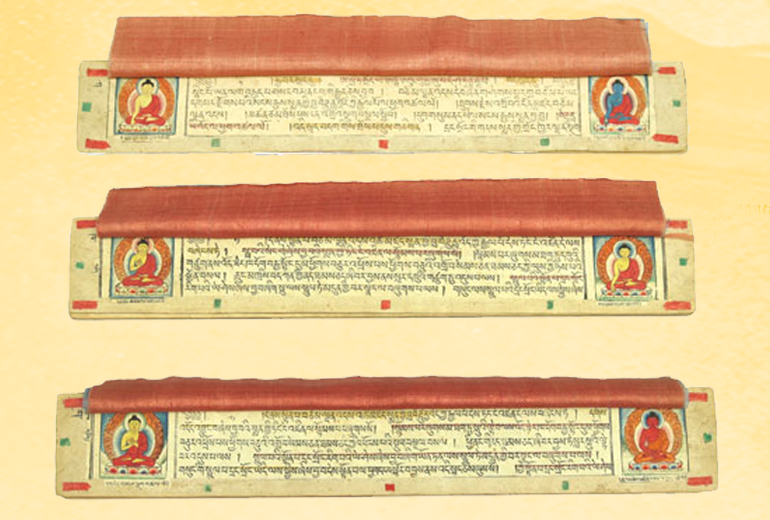
Tibetan Medicine Medical Text Heritages
Share
- The Four Treaties of Tibetan Medicine

In the Tibetan Plateau, there is a proverb that says, "One is not a physician if one has not read 'The Four Treaties.'"
"The Four Treaties," written at the end of the 8th century by the founder of Tibetan medicine, Yuthok Yontan Gonpo (708–833), represents the most systematic, complete, and fundamental theoretical system in Tibetan medicine. It is also one of the most influential traditional medical texts in Tibetan medicine. Yuthok Yontan Gonpo was born into a family of medics in the Tibet region. From childhood, he learned Tibetan and was instructed in medical theories. At the age of forty-five, based on the medical knowledge of Tubo (ancient Tibet), and extensively drawing from Chinese and Indian medicine, he spent ten years writing "The Four Treaties," laying a theoretical foundation for the development of Tibetan medicine. In 2018, "The Four Treaties" was included in the UNESCO Memory of the World Register for Asia and the Pacific.

The text is a compendium of ancient Tibetan medical knowledge, rich in content and complete in theory, especially notable for its achievements in anatomy and physiology. The book consists of 156 chapters, covering 1,616 diseases and 2,258 medical prescriptions. It not only represents the highest level of medical practice in Tibet at that time but also reflects the early culture, history, traditions, literature, art, and craft of Tibet
- Crystal Orb and Rosary

"Crystal Orb and Rosary" was authored by the renowned pharmacologist Desi Sangye Gyatso. The author conducted field investigations in eastern and southern Qinghai, western Sichuan, and eastern Tibet, verified information, and examined the medicinal records in the literature of Tibetan medicine through the ages. After about twenty years of work, the text was completed around 1735 and was published in a woodblock printed edition in 1840. This book embodies the essence of Tibetan materia medica and has been passed down to future generations.
It contains 2,294 different types of medicines, most of which are primary and unique species from the Qinghai-Tibet Plateau. It is the classic work with the most extensive collection of medicinal substances in the history of Tibetan medical literature. The classification of medicines in this book is close to modern scientific taxonomy and continues to be of significant reference value in the fields of botany, zoology, and natural pharmacology. Each medicinal substance is described in terms of taste, properties, effects, and precautions for use, adding detailed content to the study of pharmacology and guiding those learning pharmacology in the principles of medication.
